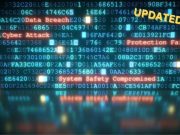While much is made about twittering members of Congress, Bill Schrier, Seattle’s chief technology officer, notes so-called Government 2.0 initiatives could help state and local government better deliver services to residents.
Facebook, for example, could be used to better connect individuals participating in a neighborhood watch, Schrier suggests. And Twitter could be used to help a city map potholes. But this approach won’t be viable until the technology is universally accessible.
“There needs to be some relatively easy yet not overwhelming way for groups of neighbors on Facebook to communicate with their local government, and their government to communicate back. We (the City) want to hear about suspicious activities and get tips about crime. But clearly no police department can investigate the hundreds or thousands of such reports which might flow in daily from a thousand blockwatches which could be established in the City of Seattle. A really useful Facebook-like application would have an easy way to correlate these reports and allow neighbors to verify issues and support each other or at least sort out the “wheat” (real problems) from the “chaff” of perceived problems.
This is an issue on a daily basis but is ten times more important during an emergency situation or a disaster, when first responders are overwhelmed and reports of problems multiply,” notes Schrier.
On the other hand, a Facebook-like social networking tool might allow local government to quickly dispel rumors and calm out-of-control fears during those same situations. And, if structured correctly, the tool could allow the police to educate residents about keeping themselves safe. A Facebook-like application might allow the Fire Department/Public Health to be aware of health problems in neighborhoods, for example (with privacy controls) help neighbors check on and support the elderly or infirm in our neighborhood.
A second great service with similar application is Twitter. Twitter’s great strength is its short, 140 character statements, and the fact that one can tweet from cell phones and i-phones as well as computers. The applications for local government are legion, ranging from reporting public safety hazards – streetlights out, traffic accidents, potholes – to gaining a rapid, accurate assessment of what is happening during a major incident such as a gas line explosion, earthquake, power outage, the rantings of a CTO, or a plane crash-landing in the Hudson River.
Similarly, the city or county might be able to “tweet” the status of streets or traffic or snow emergencies, thereby informing people of emergent situations. Government twitterers could also be definitive sources of information, helping to quell rumors. But I think that tweets from on-the-scene “civilians” can play a major role in rumor-quelling and information gathering in and of themselves.
Facebook, Twitter, LimeSurvey, Google Moderator and similar tools might provide a way to receive and better rank such input. Google Moderator was used by the Obama administration to allow people to post ideas, and then vote on them. Because a userid/password was required, a single individual could not overwhelm the voting process. Tools like Delicious can also be used for ranking. Visualization tools like Microsoft Virtual Earth or Flickr could be used in mashups to build visuals and gain comments on neighborhood plans, capital projects or parks improvements.
Well put, CIO Schrier. [24×7]
Get more info in the Seattle24x7 blog

















